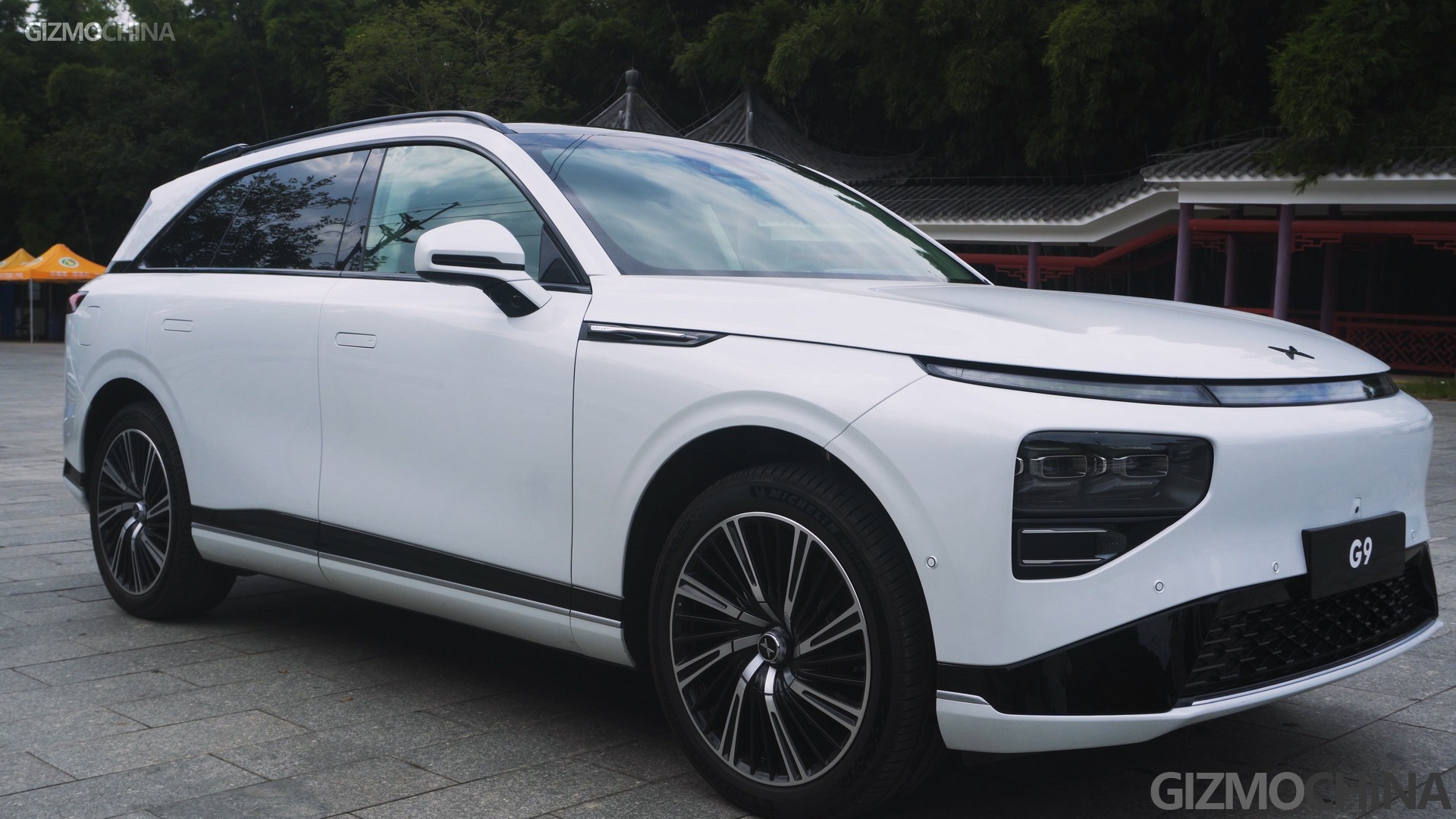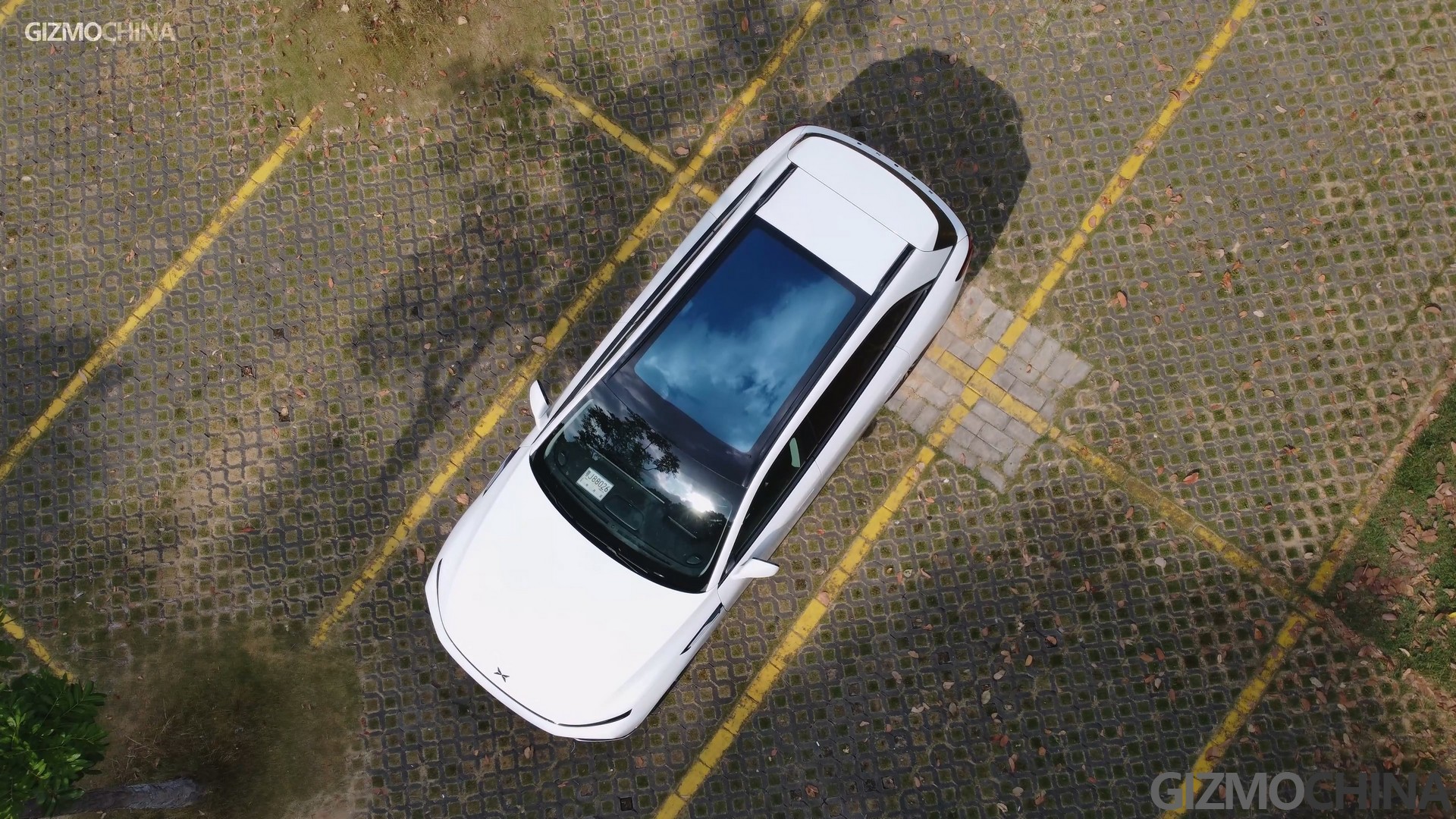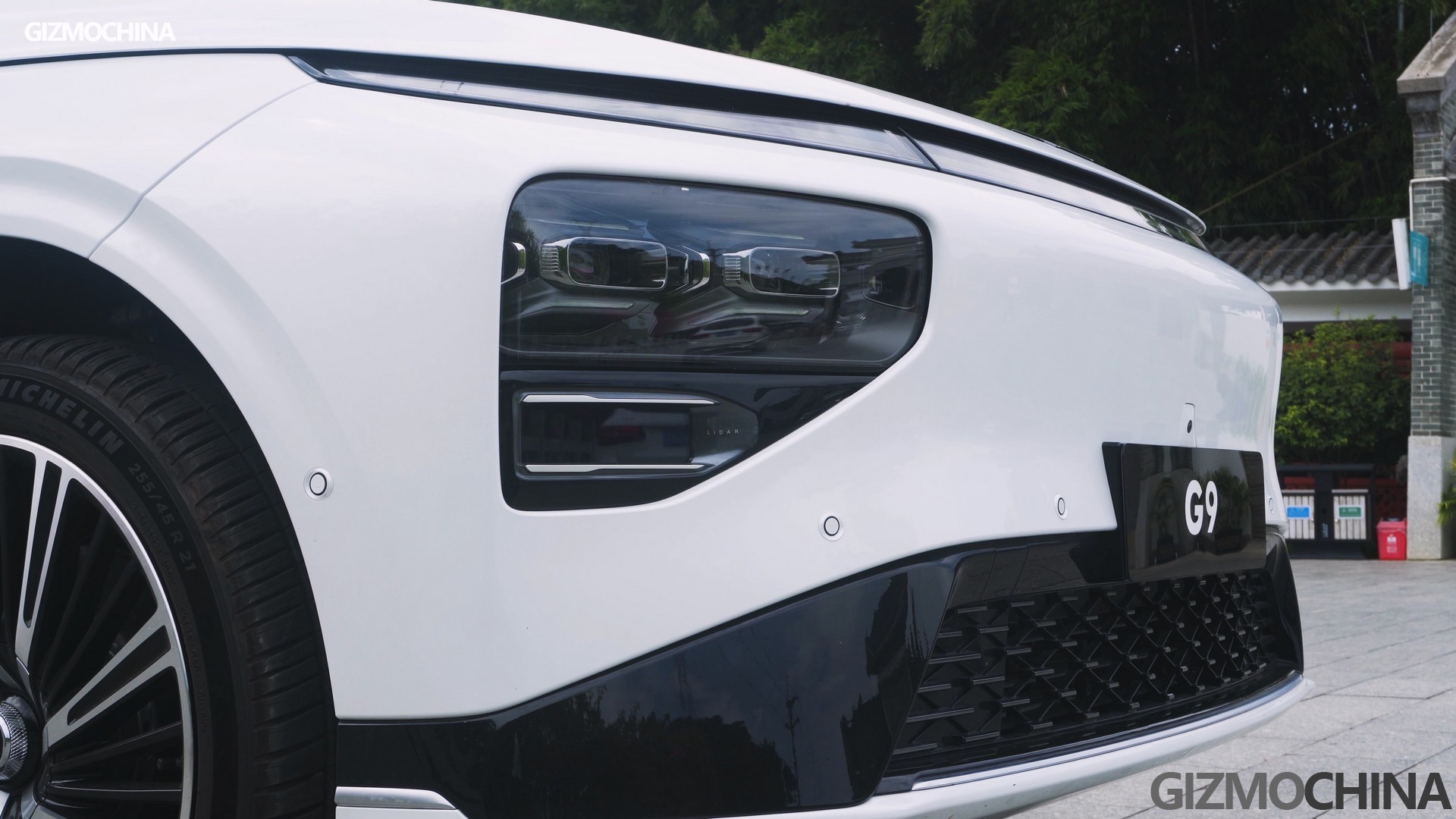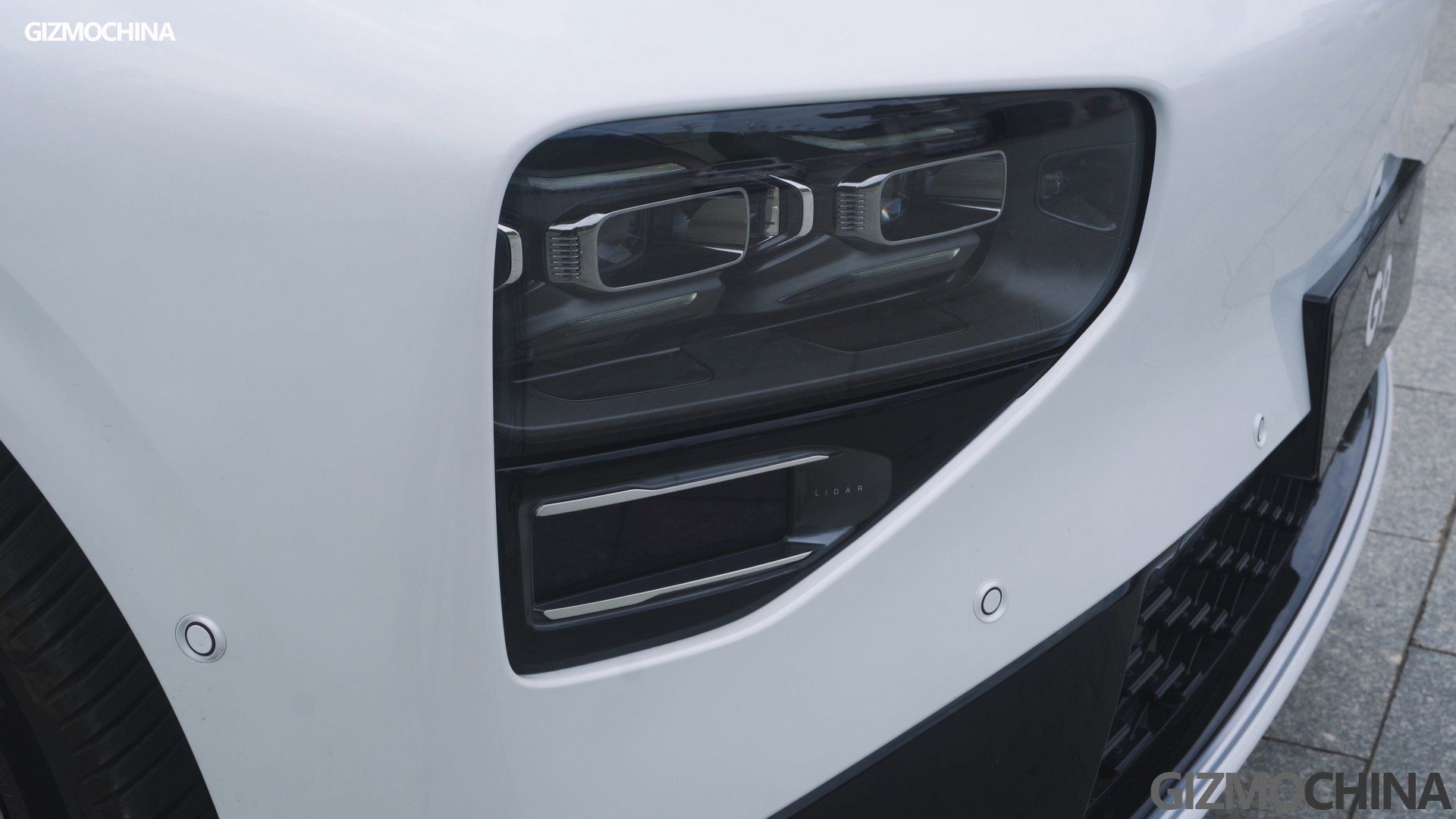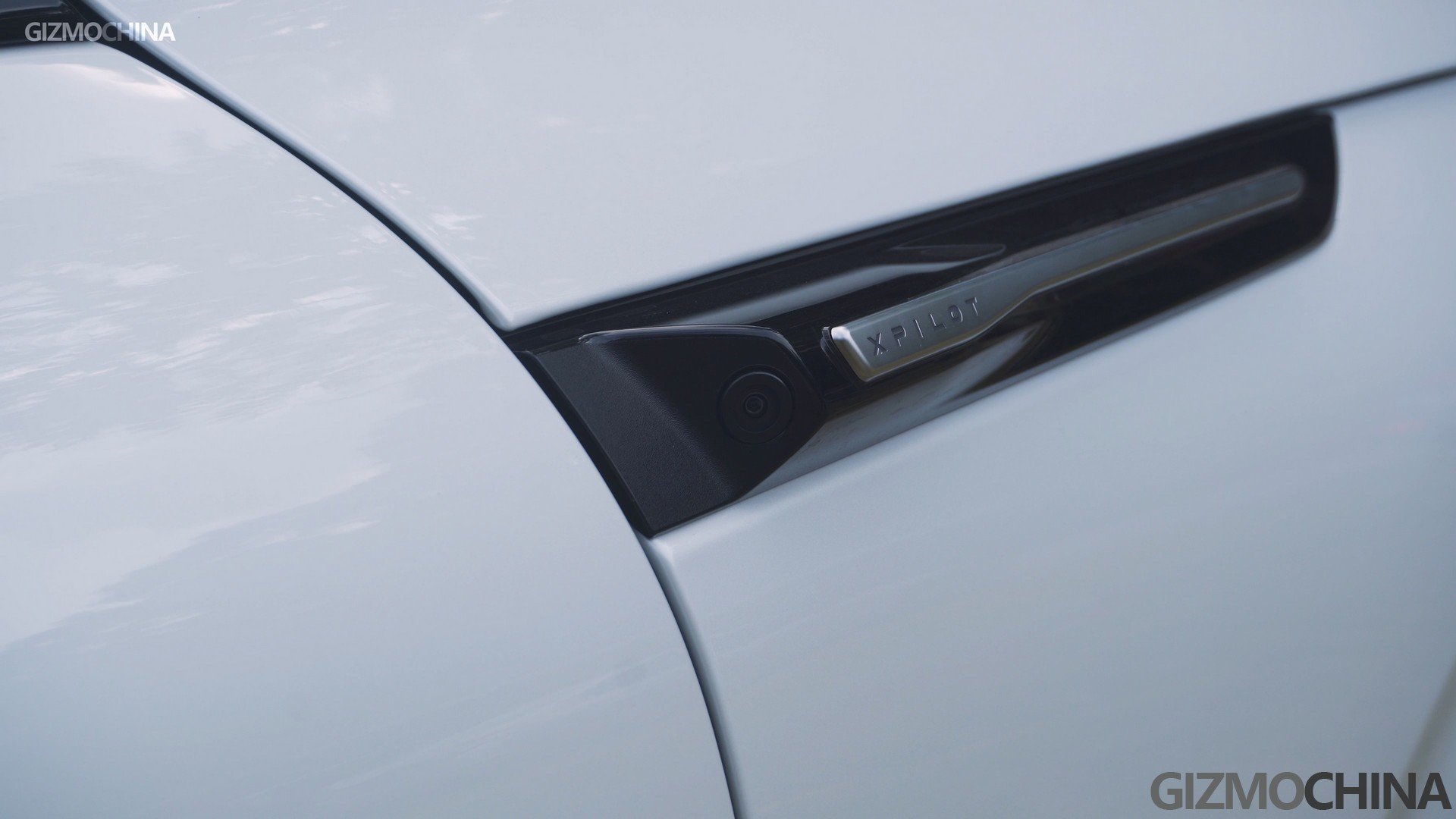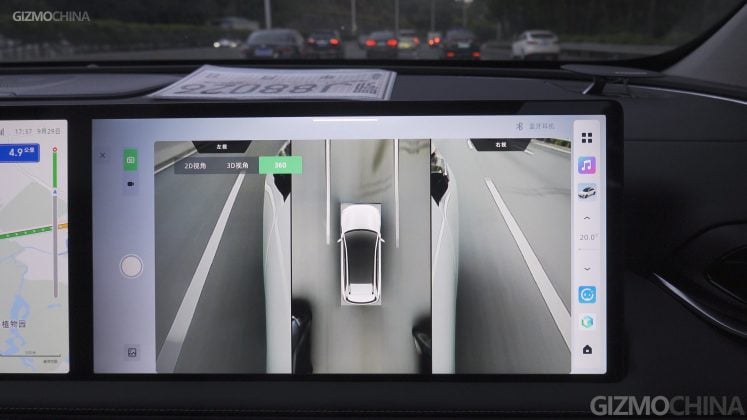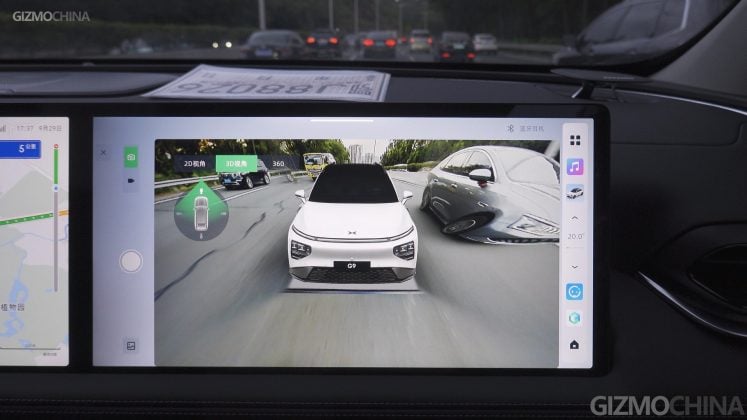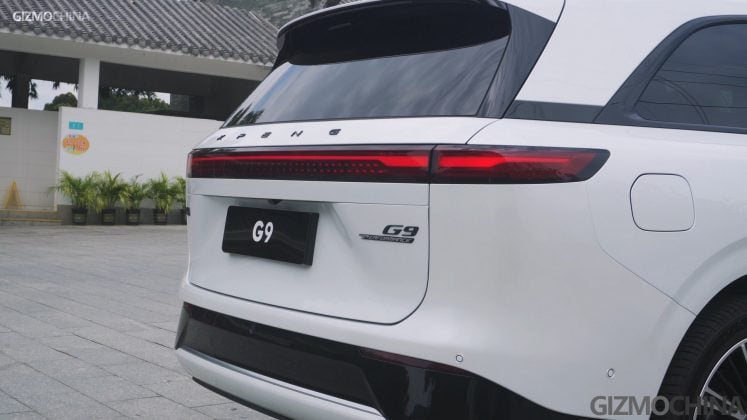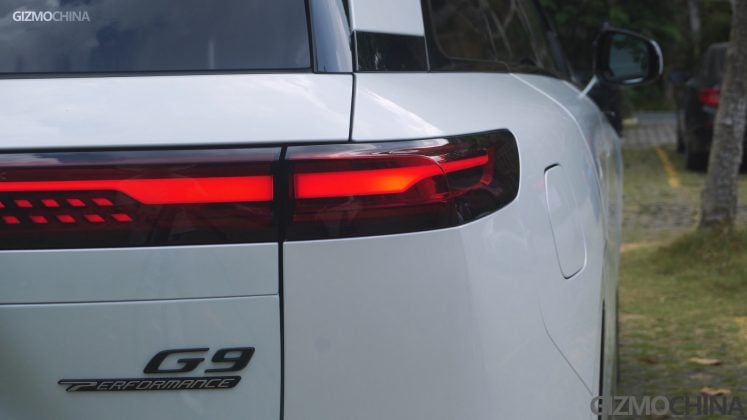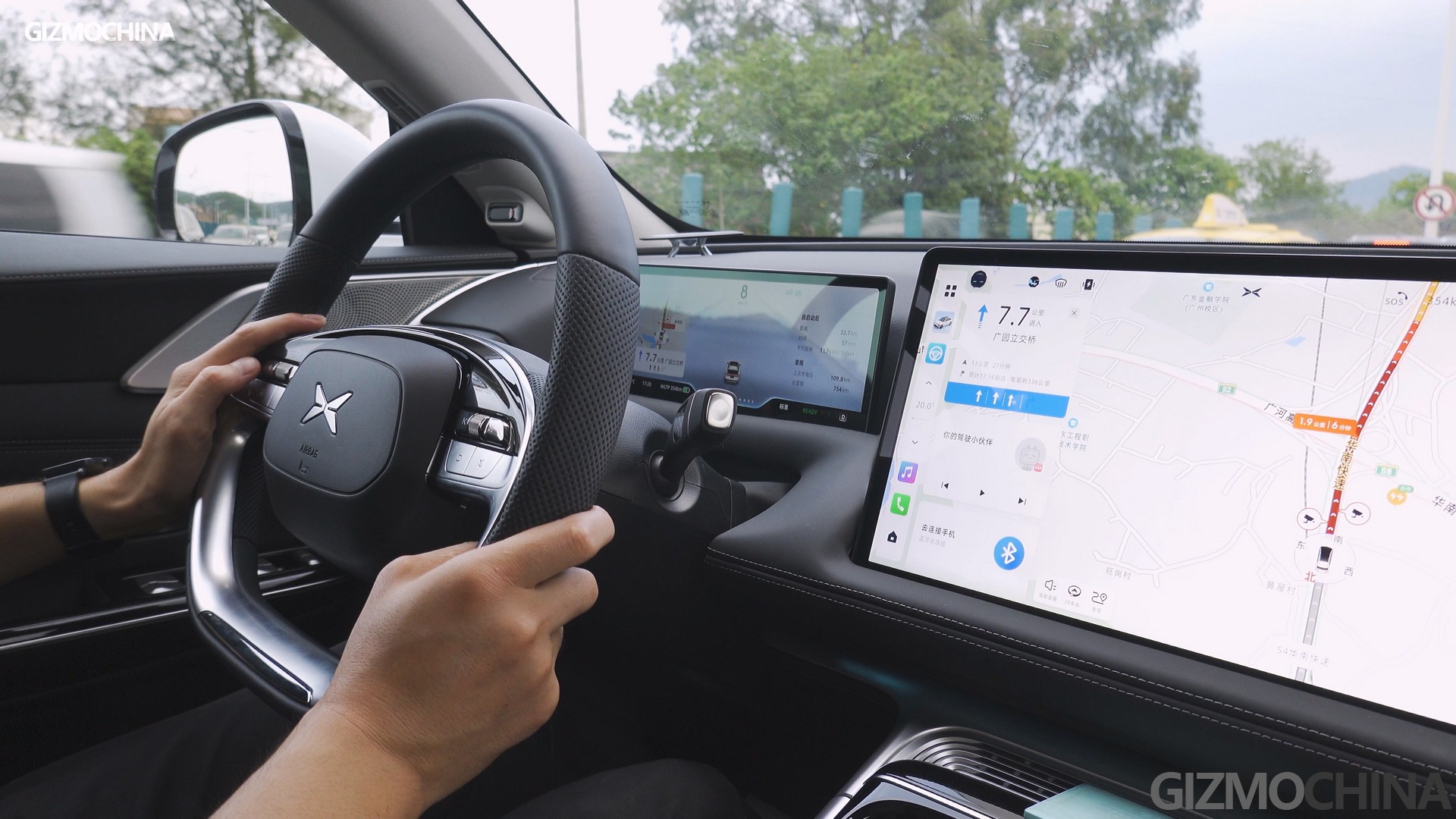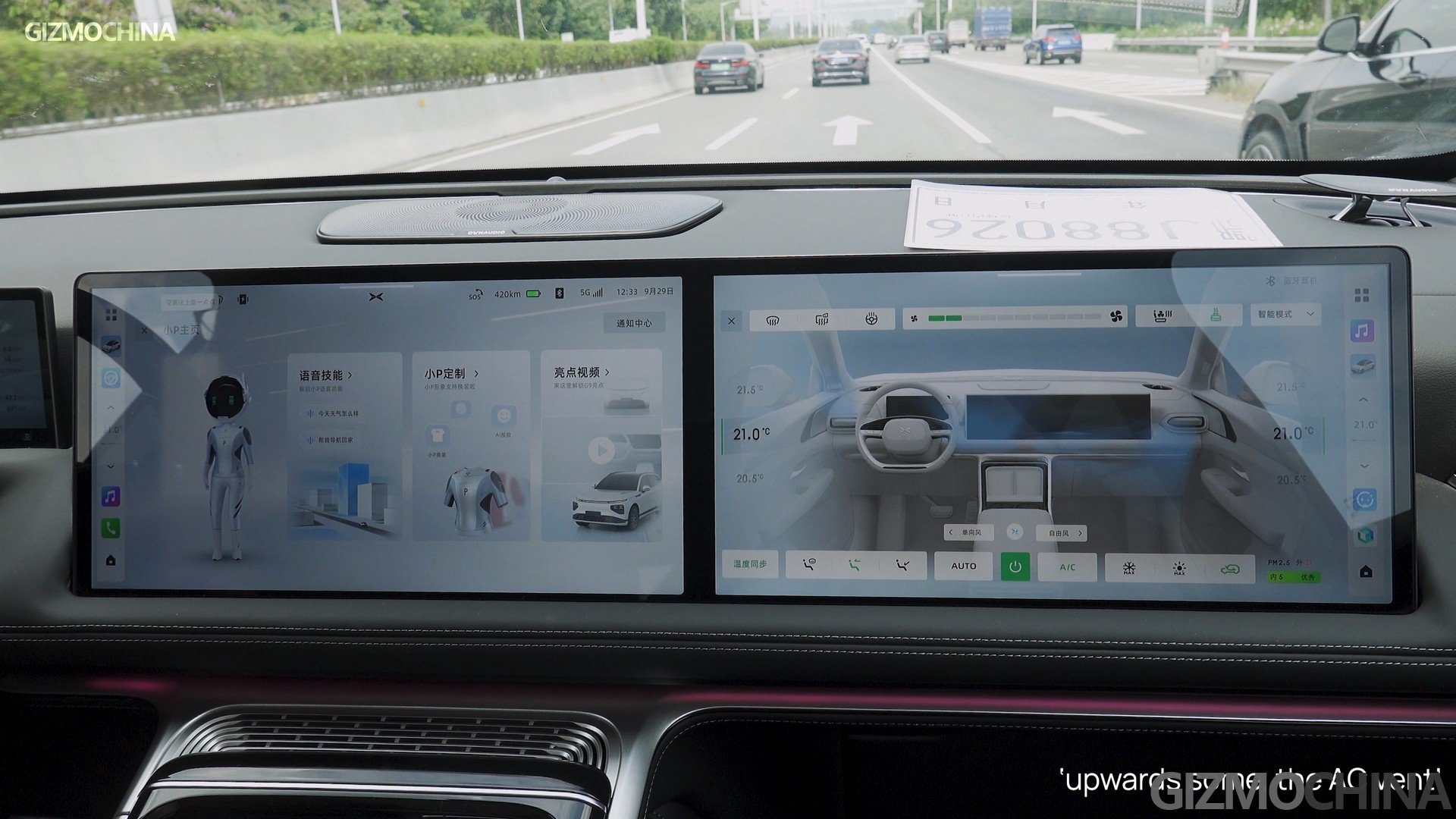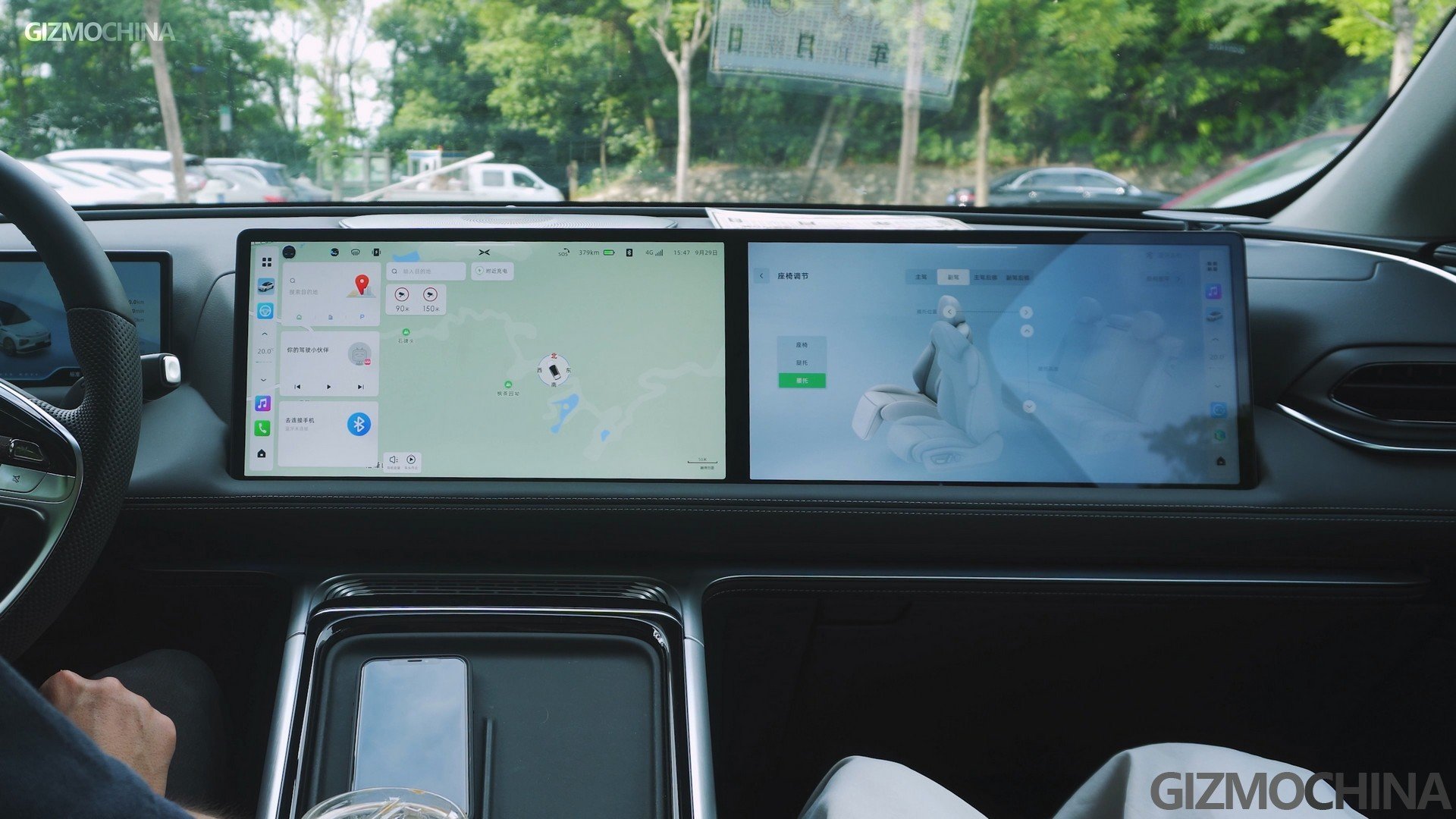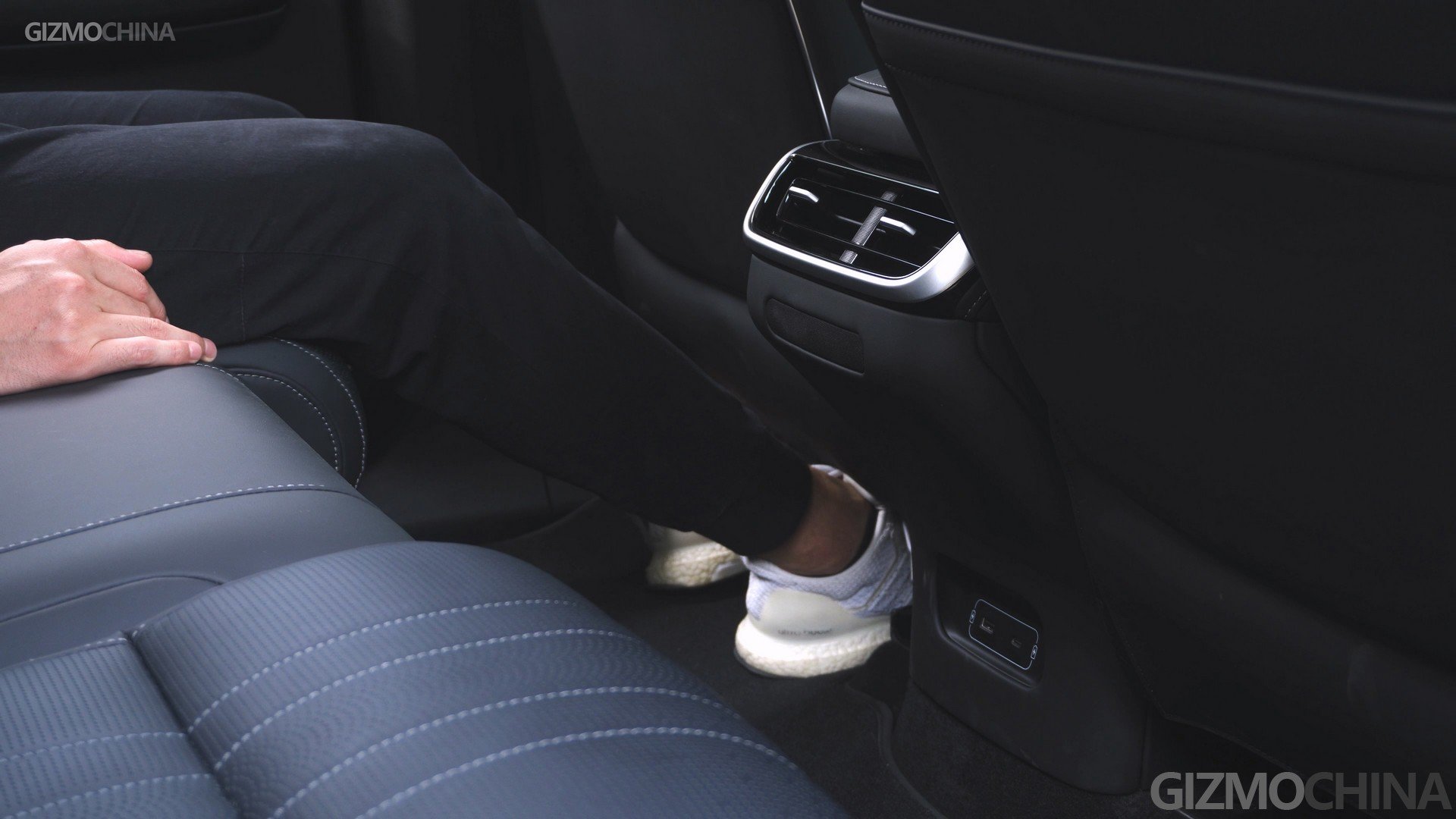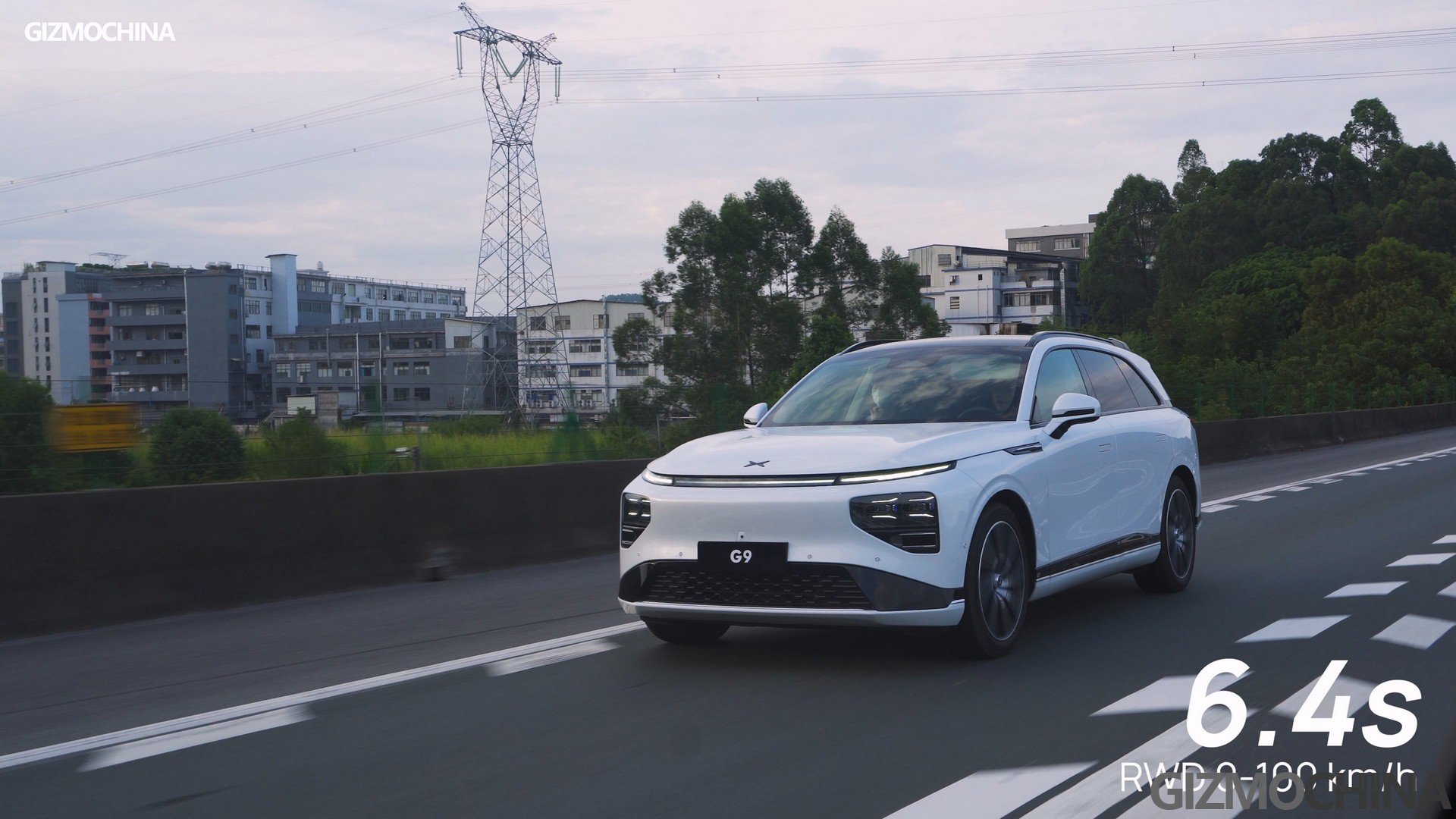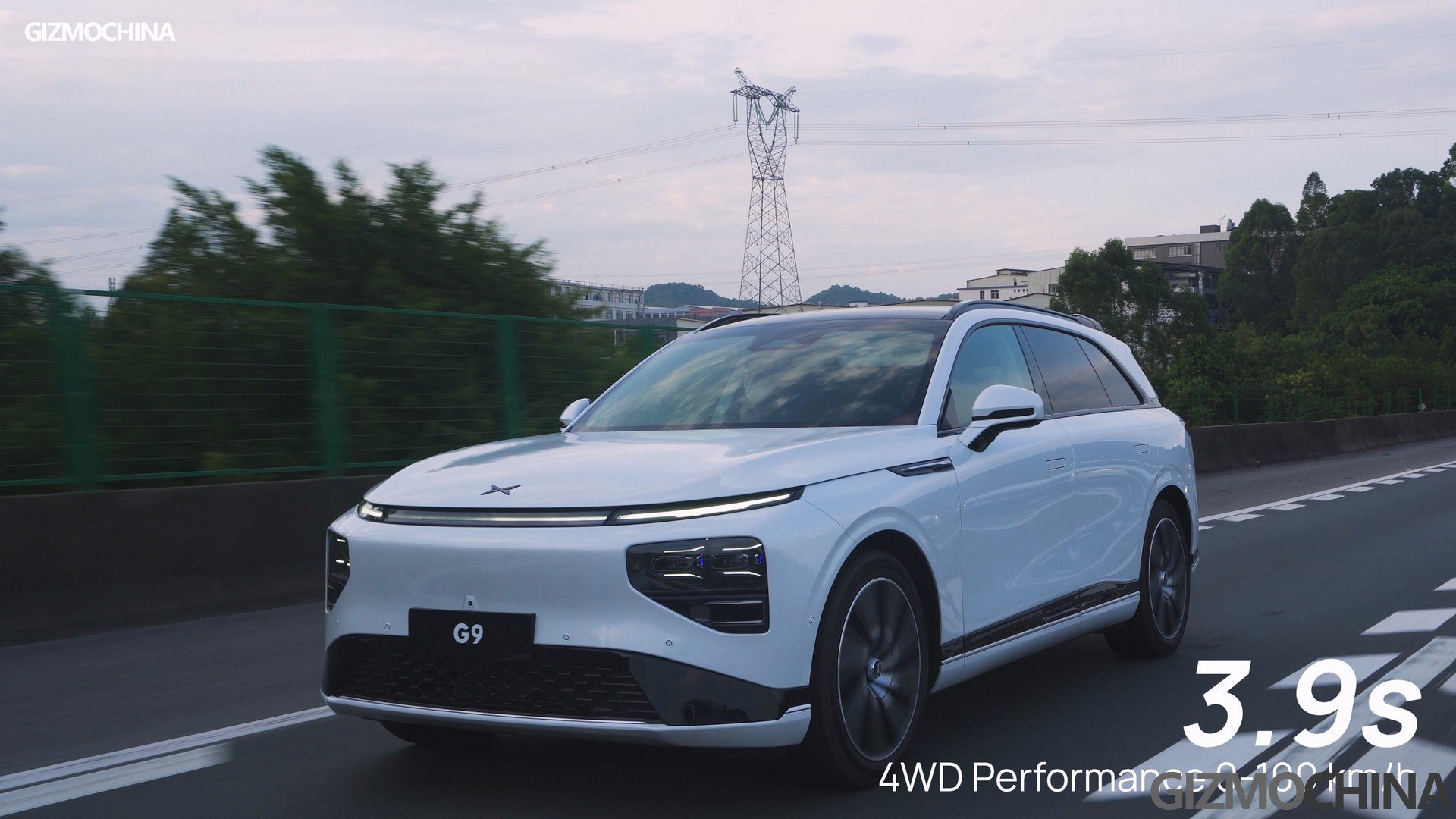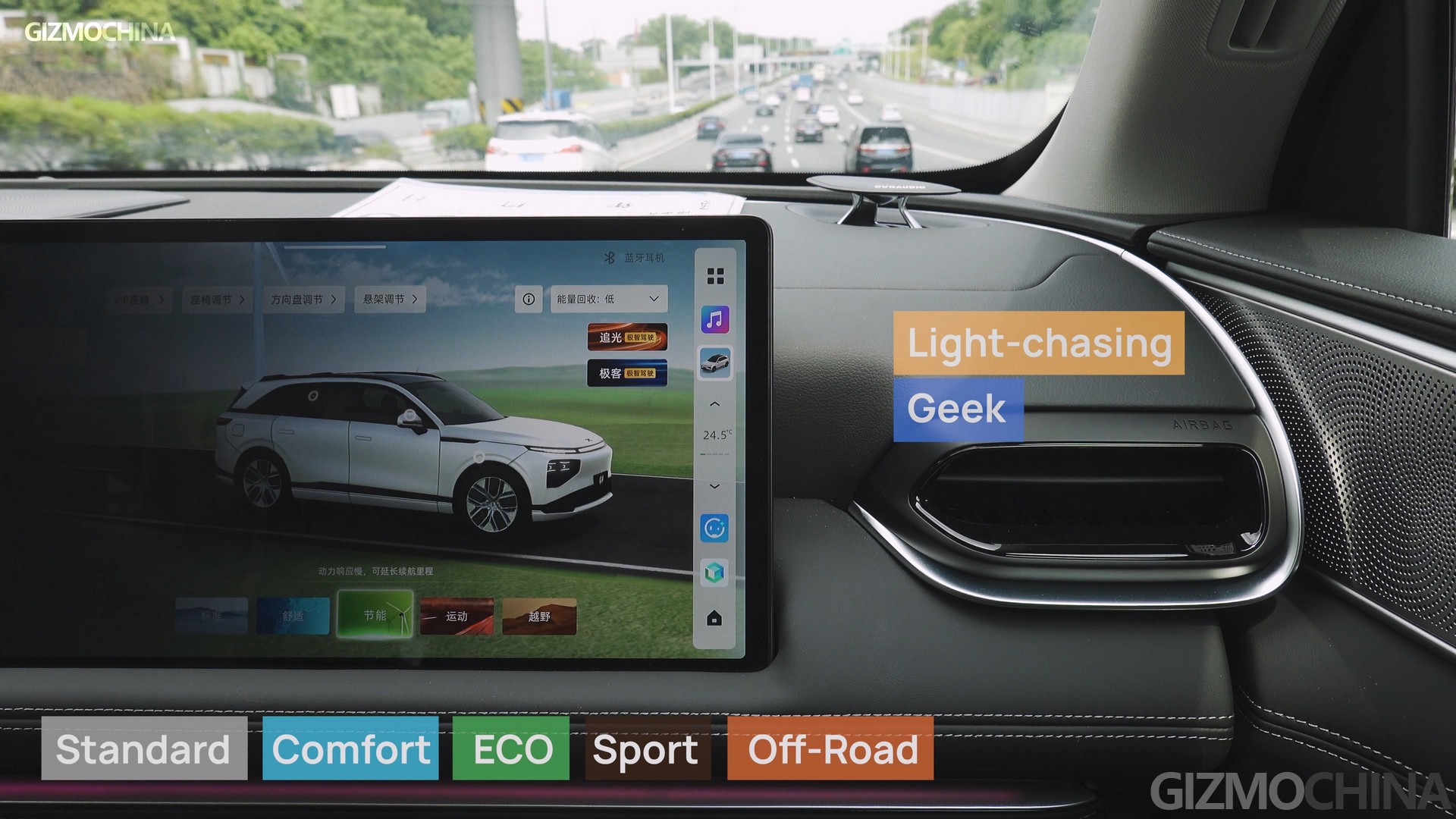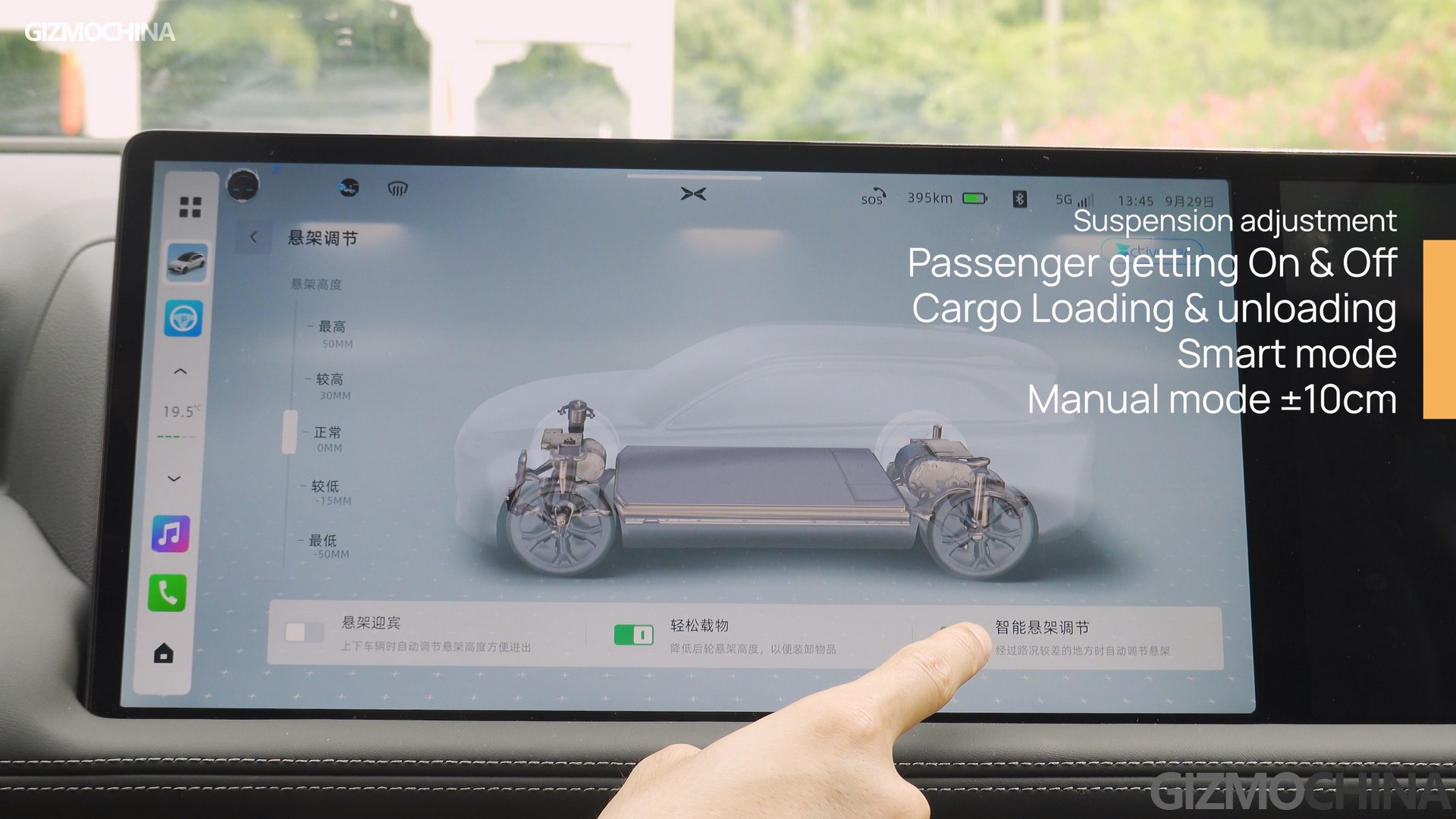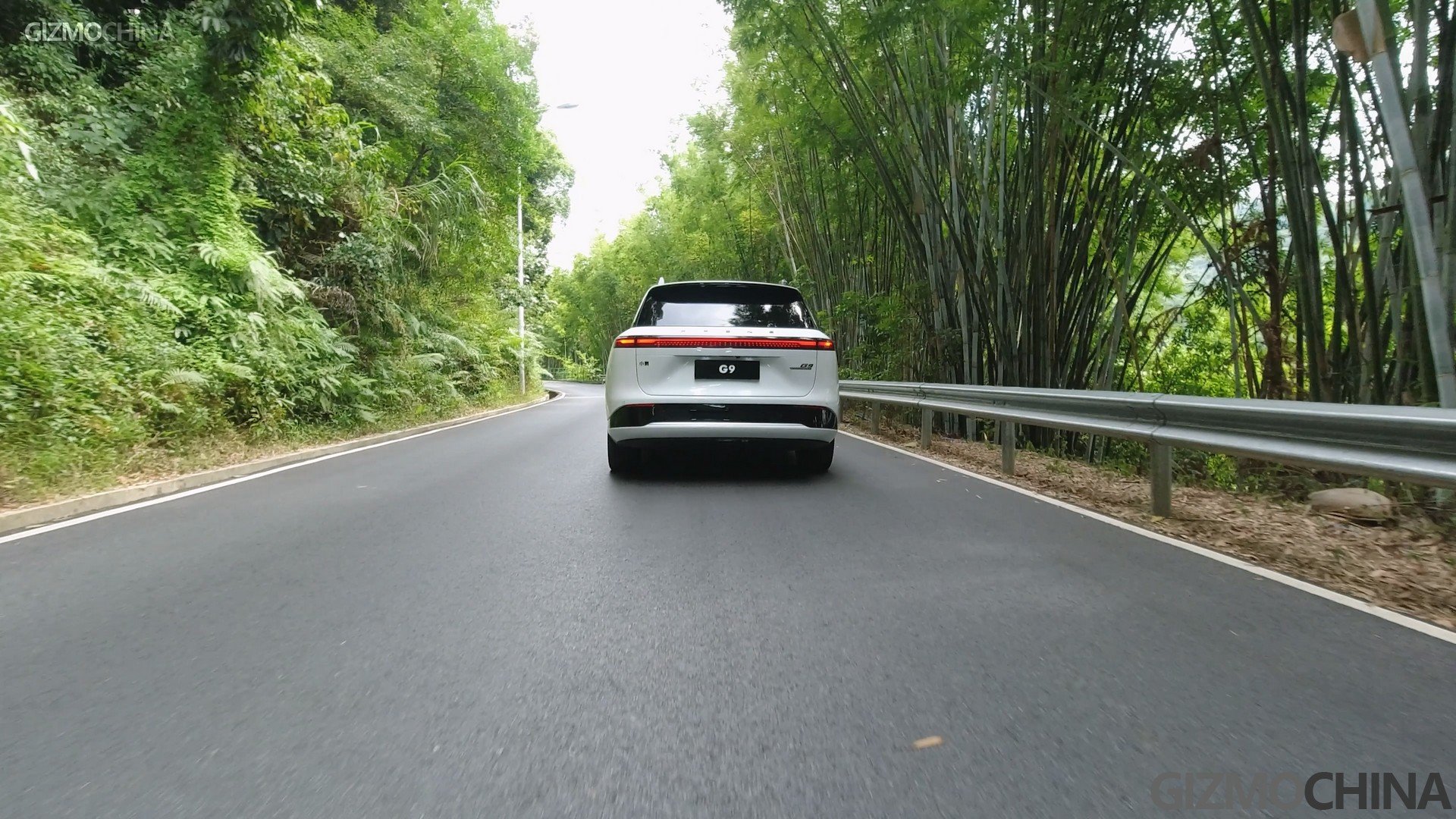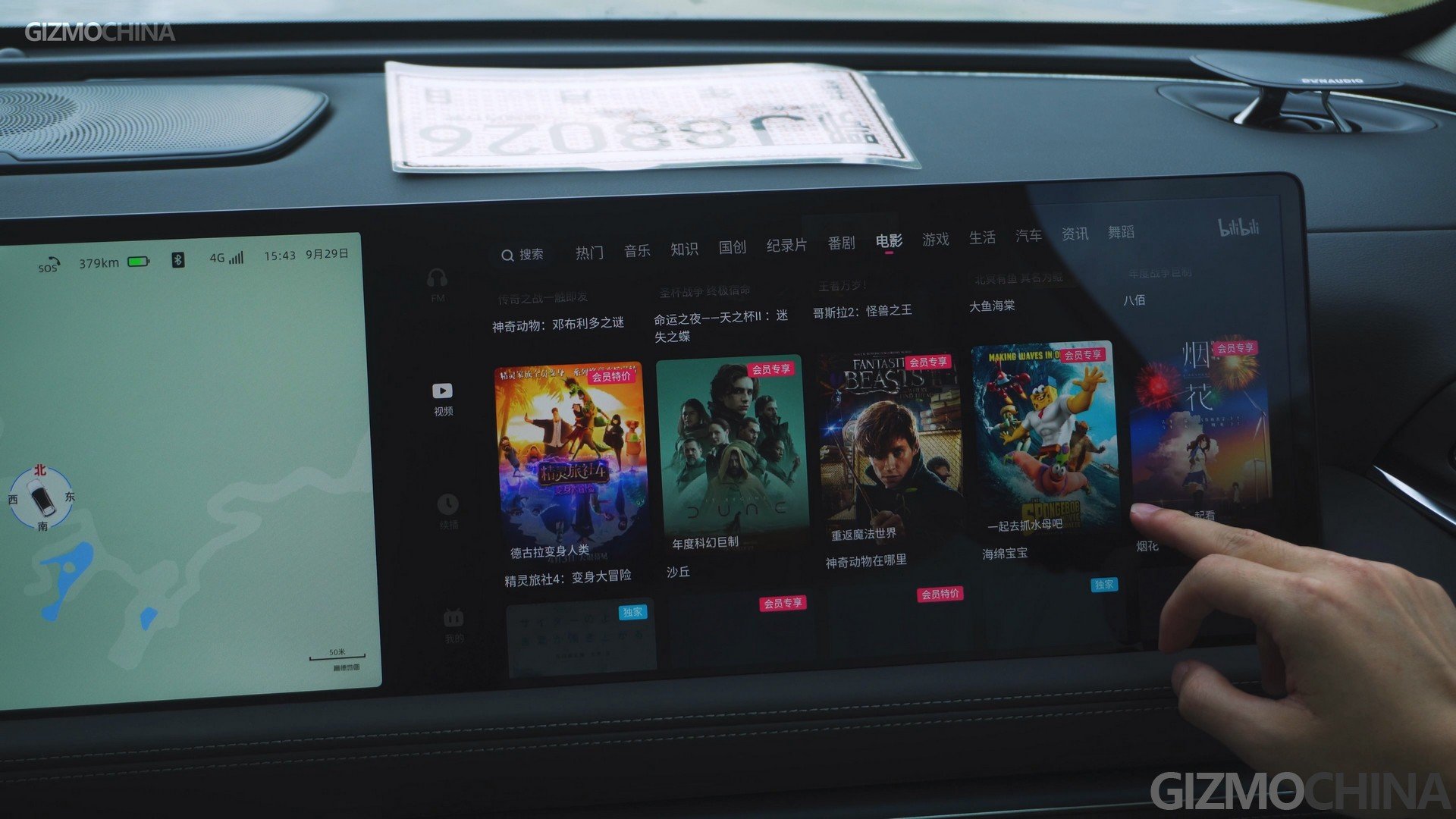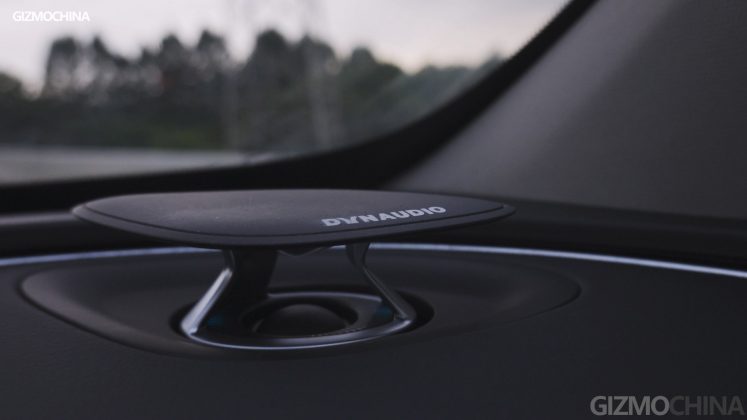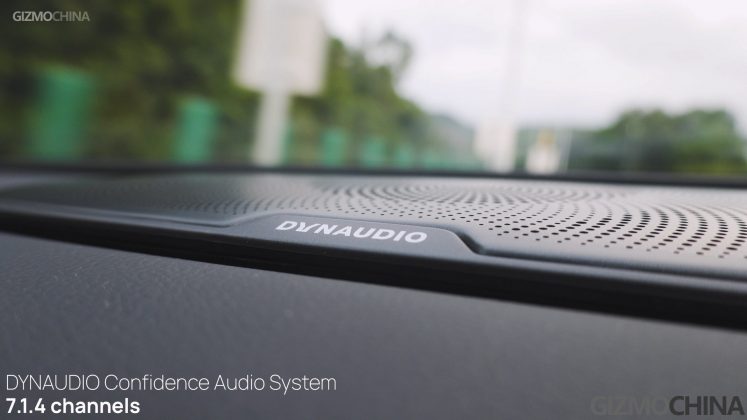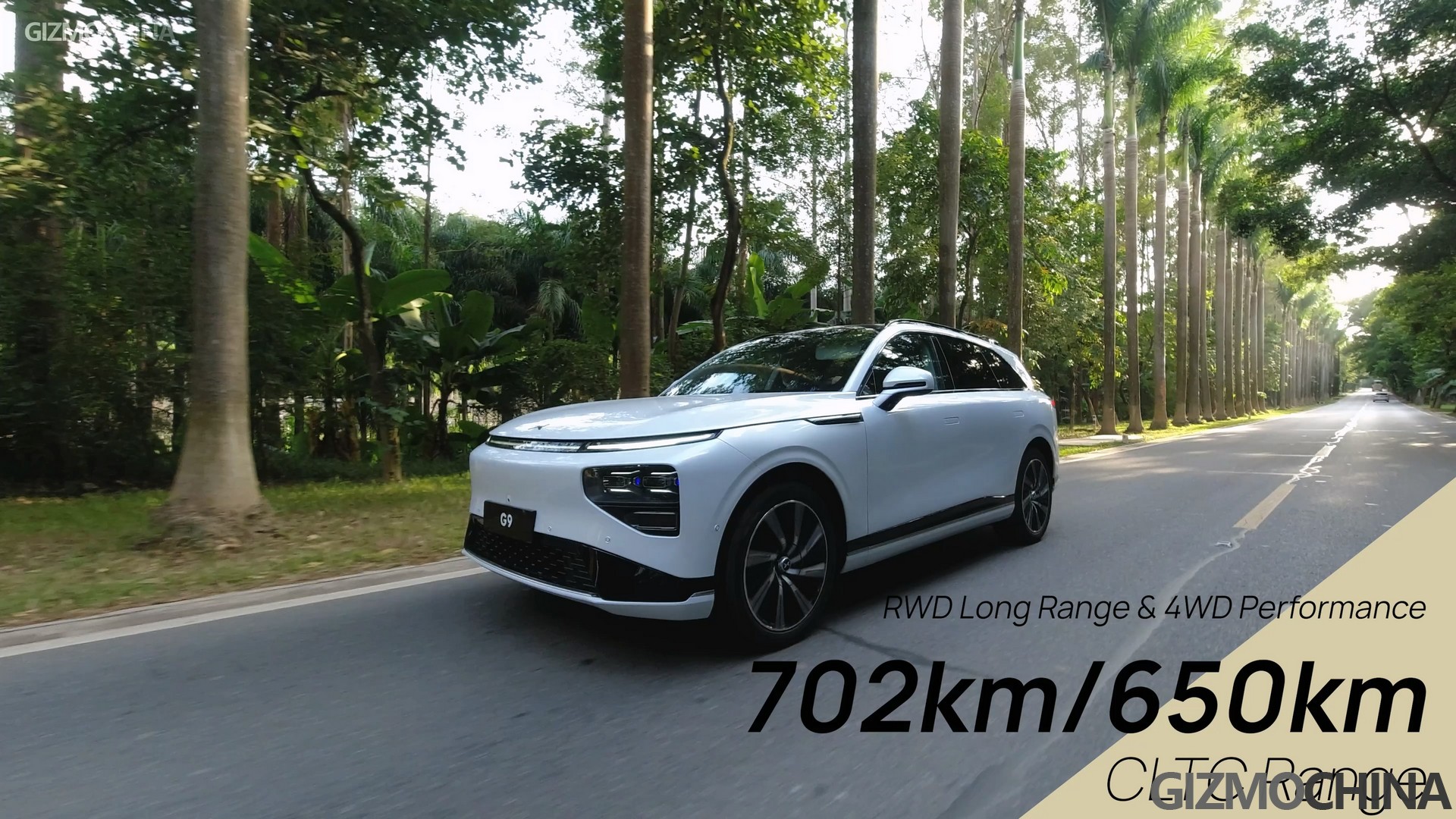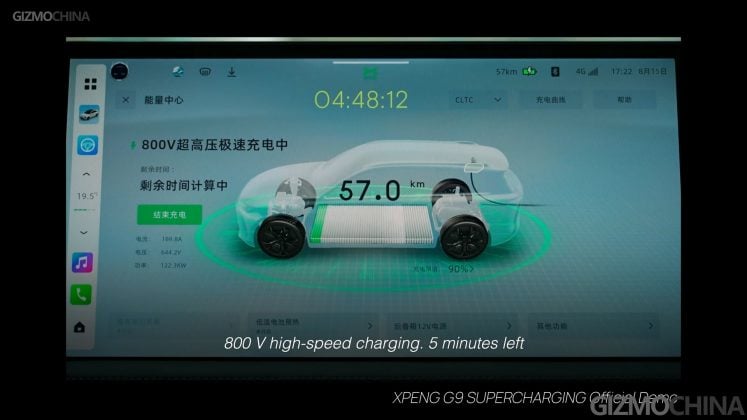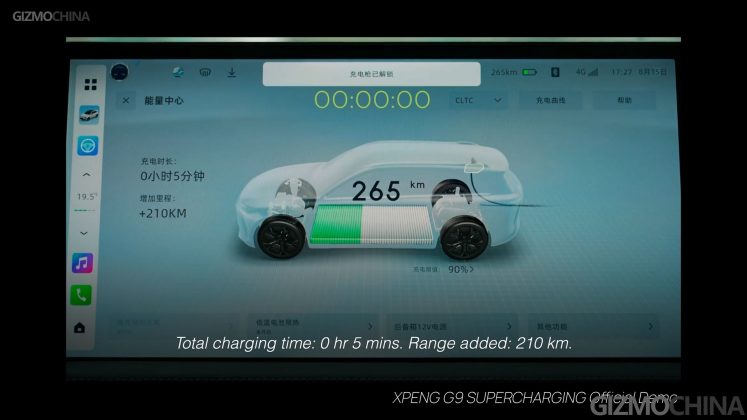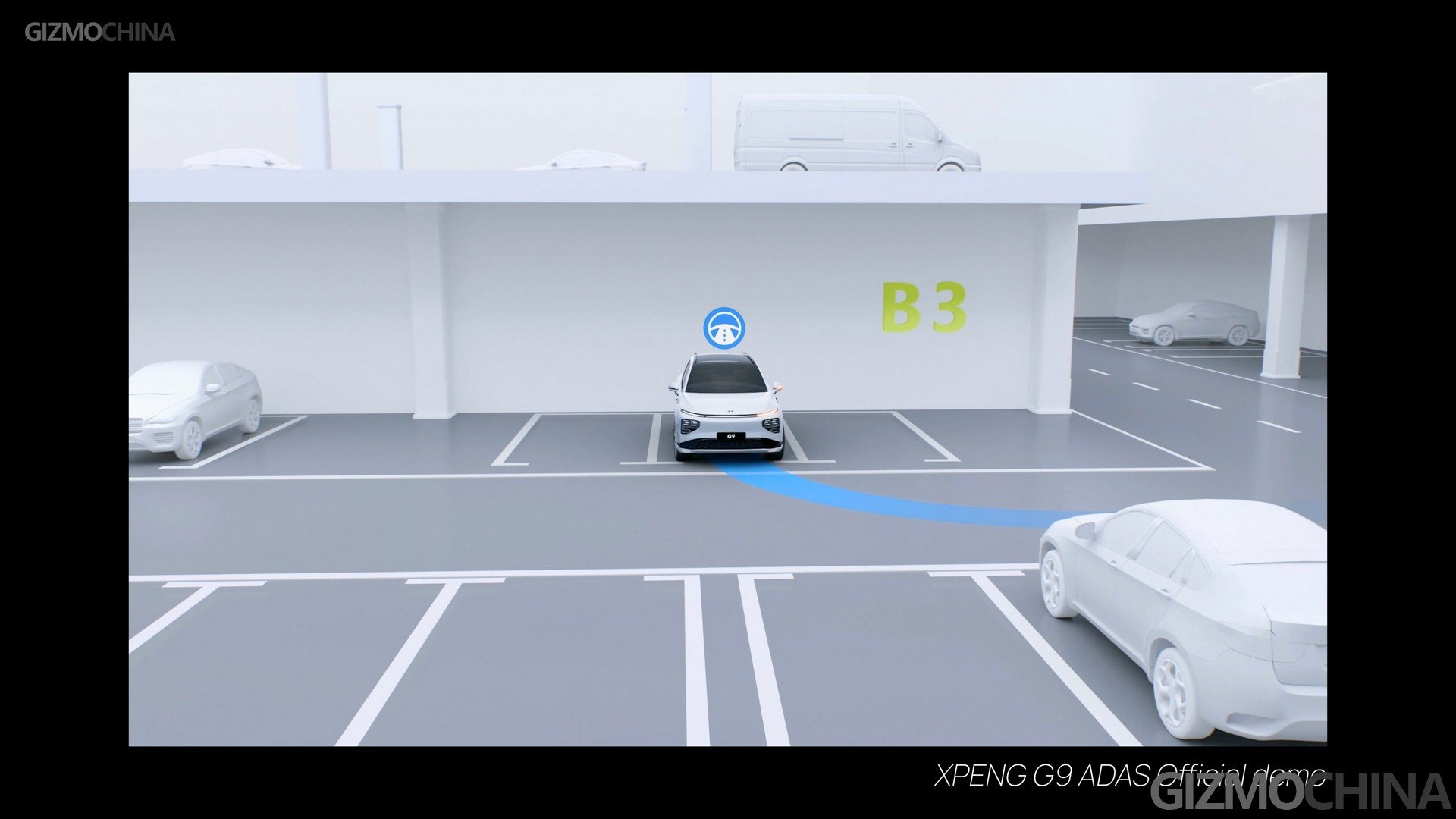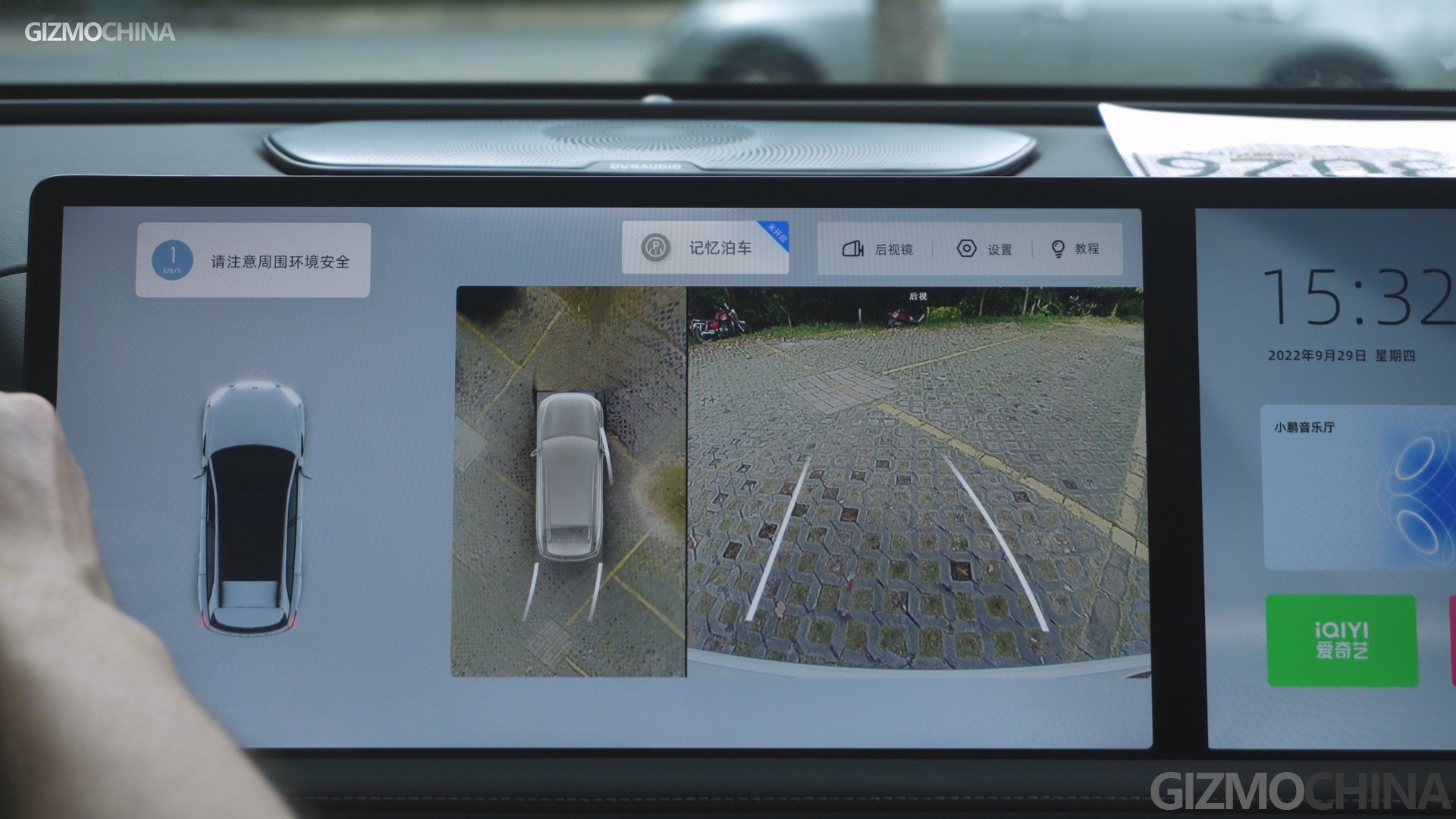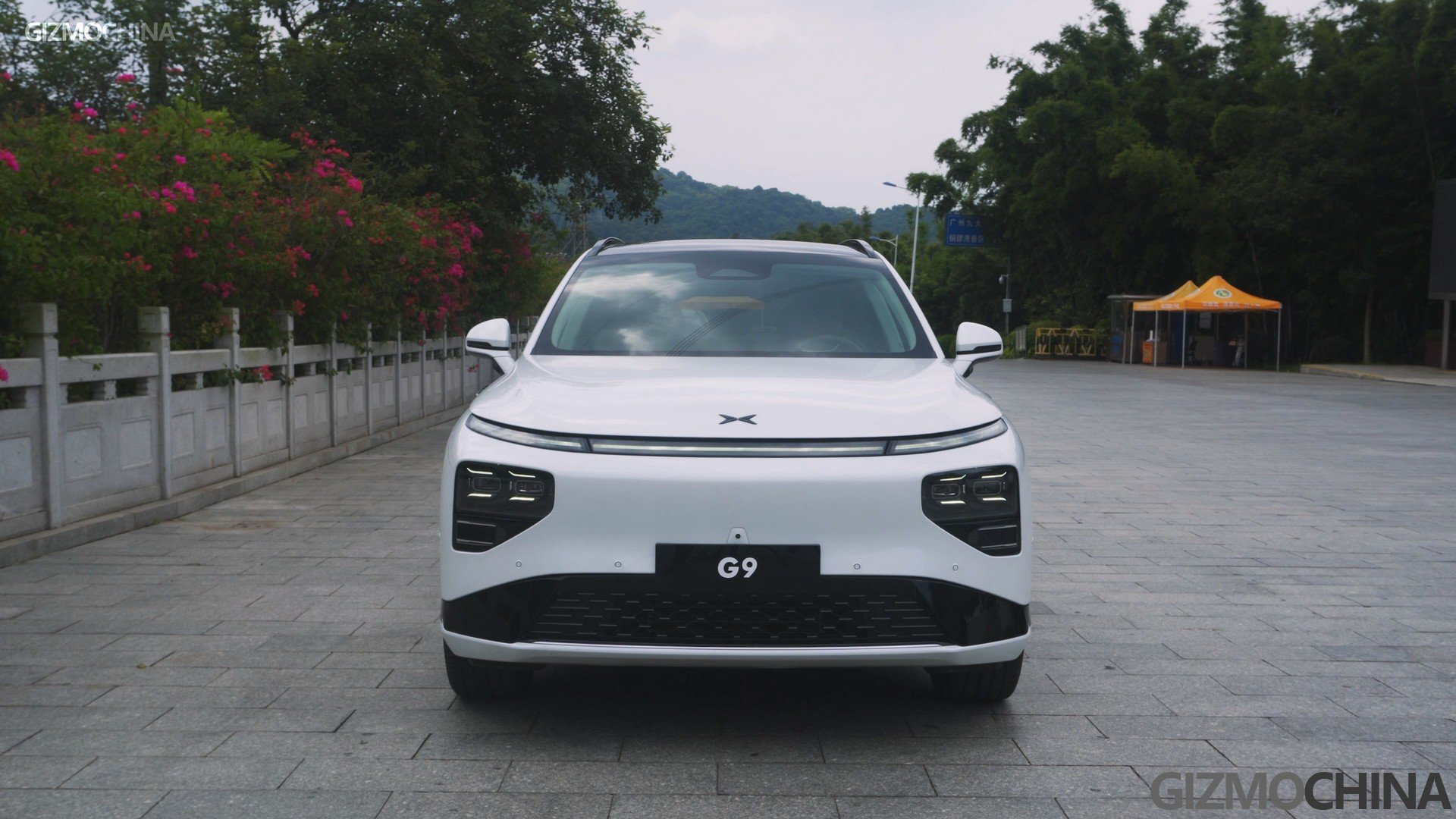XPENG G9
Several days ago, the EV brand XPeng eventually launched its latest SUV model, the Xpeng G9, which is also the brand’s first fourth production model. The new model is positioned at the top of the line-up with the world’s fastest-charging technology. And right now we just arrived at one of the XPeng Motors showrooms in Guangzhou and also got permission to test drive the G9.
The reason why we are so excited about the G9 is that It’s not a China-only model but going to reach Europe and North America in 2023. We’re keen to get an early taste of what the latest electric car can actually do before it hits the world, how it differs from traditional cars or even other EVs, and just think a bit about the final question, whether it will replicate the successful comeback of the Chinese smartphone industry.
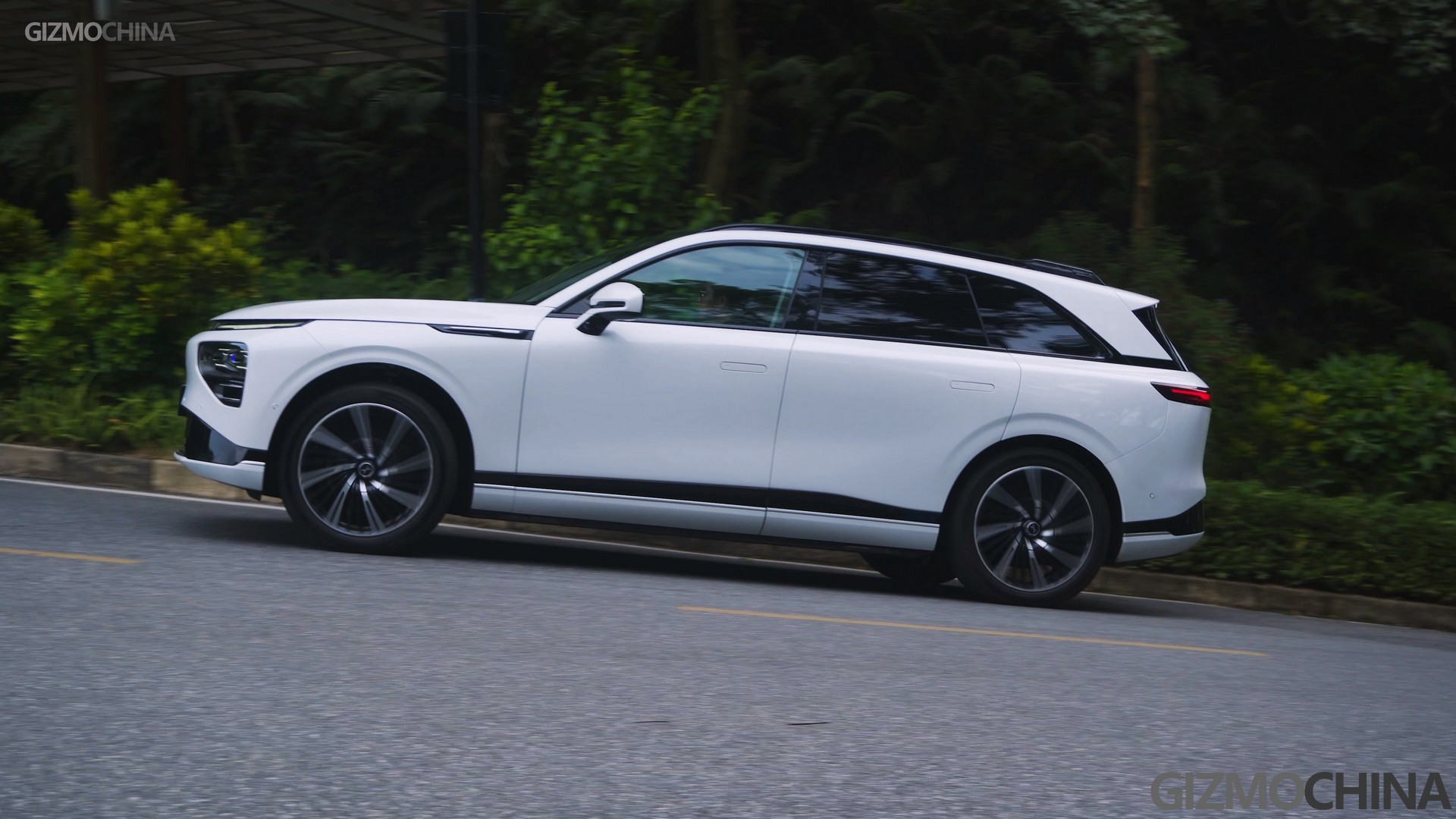 G9’s profile & design
G9’s profile & design
The G9 is positioned in the medium- to the large-sized smart electric SUV market. It measures 4.89m in length, 1.94m in width, and 1.67m in height.
The car is underpinned by Xpeng’s ‘Edward’ platform with a long wheelbase of about 3m, which actually is pretty close to a large-size SUV. The long wheelbase gives the occupants more space and will significantly increase the leg space for better comfort.
The G9 offers 660 liters of cargo space, expandable to 1576 liters by folding down the rear seat. And it also has a frunk, which adds 71 liters to the storage.
If you’ve watched our test drive video of the Xpeng P7, you may also notice that it really is like an SUV version of the P7 sedan. They both have a full-length glass roof, frameless windows, retracting door handles, and the signature full-width, slim DRL strip at the front. The biggest difference is the separate headlights below the strip, which creatively integrate two LiDAR sensors.
Apart from the 2 LiDARs, the G9 features 29 more sensors including 12 cameras, 5 millimeter-wave radars, and 12 ultrasonic radars. The powerful sensing capabilities provide all-around hardware support for the G9’s advanced driver assistance system.
And unlike the P7 model, you can see more hard-edged body lines on the side of the G9, but it’s still relatively smooth if compared with other traditional SUVs. The back also got slightly changed with a wider light bar. Two separate rear lights are hidden as two slim bars under the trunk door. The body lines of the rear are much more rigid than the P7.
Interior
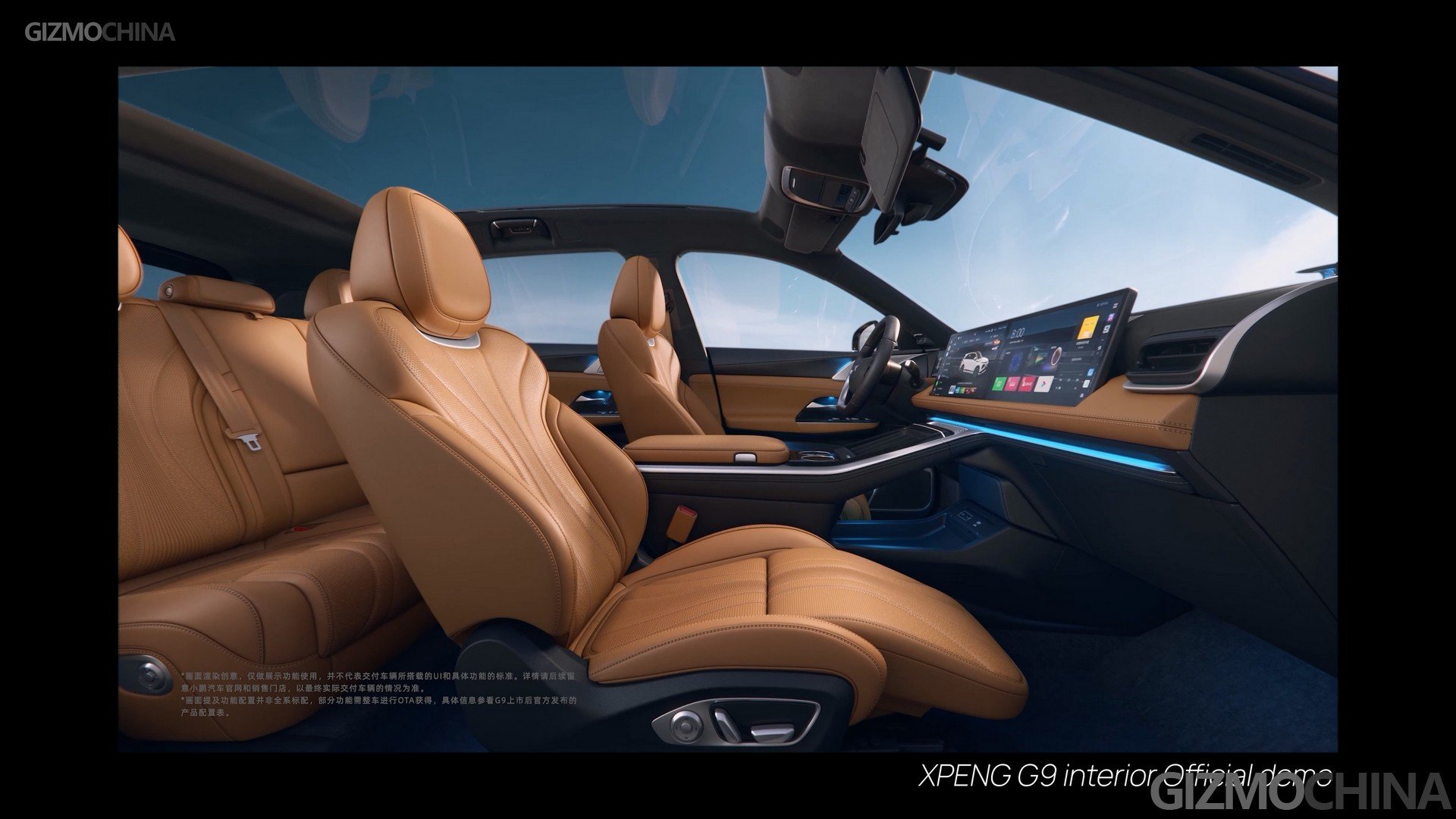 Compared with the P7, the interior of the G9 is significantly improved with a more premium look and more digital setups. We agreed that the P7’s interior is clean and modern but not as elegant as the G9’s. The G9 is a five-seat SUV with three free-standing displays on the dashboard. In front of the driver, the digital instrument cluster is tucked in to reduce sun glare, and increase the sense of spaciousness. The other two displays clubbed together are much larger, and just look like a single 14.96-inch display.
Compared with the P7, the interior of the G9 is significantly improved with a more premium look and more digital setups. We agreed that the P7’s interior is clean and modern but not as elegant as the G9’s. The G9 is a five-seat SUV with three free-standing displays on the dashboard. In front of the driver, the digital instrument cluster is tucked in to reduce sun glare, and increase the sense of spaciousness. The other two displays clubbed together are much larger, and just look like a single 14.96-inch display.
And we are happy to see the display panel extend to the passenger side. While the informative display on the left working for the driver, the other one can separately provide more entertainment options for passengers, which is also a trending feature in new luxury models, having more digital sense with more touchable displays.
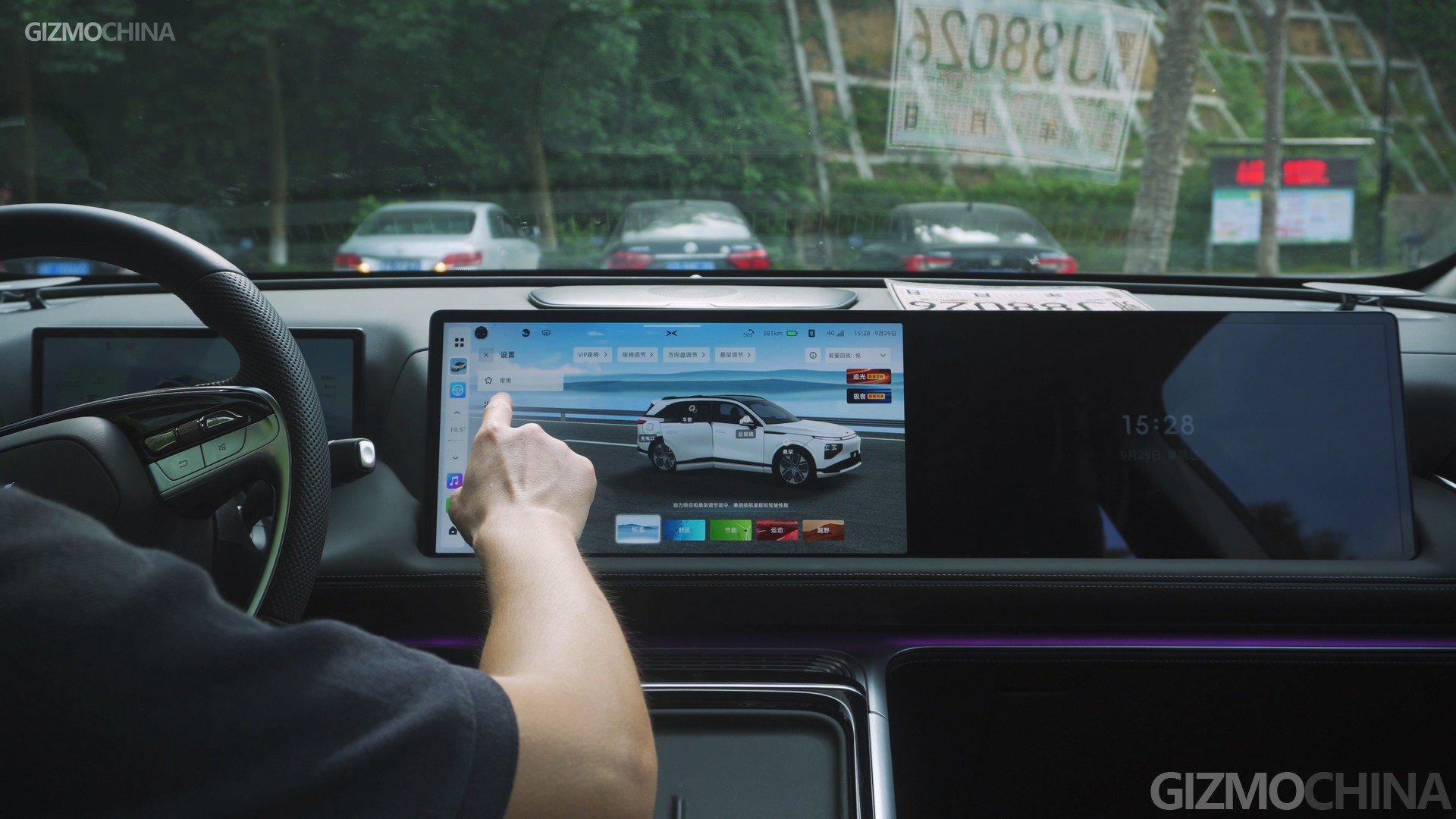 In the connection between the dashboard and the curved center console, you can see a strip of ambient lights across the right side, which is also integrated with a slim AC vent like what we’ve seen in the P7. On the center console, there’s a wireless charger for smartphones and two cup holders. Well, they are quite small twos. The 60W USB-C charging port, another USB port, and the cigarette lighter are all located in the hollowed-out position of the center console.
In the connection between the dashboard and the curved center console, you can see a strip of ambient lights across the right side, which is also integrated with a slim AC vent like what we’ve seen in the P7. On the center console, there’s a wireless charger for smartphones and two cup holders. Well, they are quite small twos. The 60W USB-C charging port, another USB port, and the cigarette lighter are all located in the hollowed-out position of the center console.
Most areas that we can touch are made of pretty high-quality materials. Especially the seats made of Nappa leather with a perforated design are more comfortable and premium than the P7’s. All the seats support heating and massage features. The front seats additionally support ventilation and the passenger side at the front even features an electric leg rest.
The seats feel spacious for leg and head, and the floor in the back is flat. So no matter whether sitting in the front or back, the large cabin gives deep support for the legs.
Variants & Performance
The G9 is offered with two different motor configurations, the RWD standard Range models featuring a rear-mounted motor, and the 4WD Performance models featuring a dual-motor all-wheel drive powertrain. The standard range model’s rear motor offers 308bhp and 430Nm of torque for a 0-100km/h of 6.4 seconds, while the performance model’s dual motors offer 543bhp and 717Nm of torque, accelerating from 0 to 100km/h in 3.9 seconds.
Test Drive
And the G9 has seven driving modes, including a boost mode that helps the SUV reach its maximum torque in just 0.15 seconds. But for most EV drivers, I think the usable range is still the primary factor to consider in most scenarios. So personally, I still prefer to drive it under ECO mode just like what I did with the Xpeng P7.
Driving in the different modes did cause changes to the way I drove, mainly the acceleration and the strength of regenerative braking. Of course, the Eco mode offers softer braking and it’s not outstanding over sportiness.
But I’m quite happy with the tracking offered by the steering system in the ECO mode, which is sensitive and precise. And the steering is well-damped but not too heavy here.
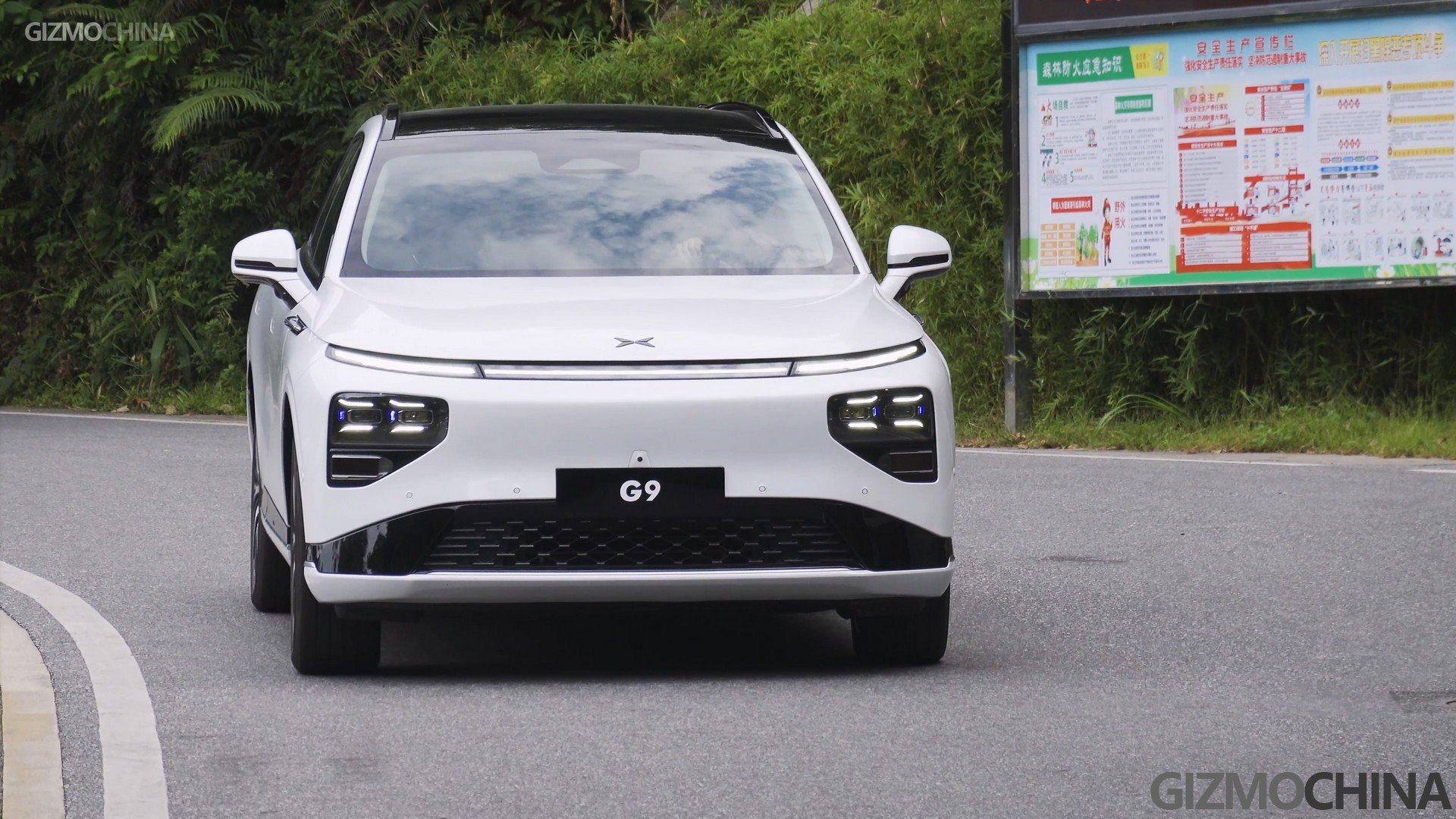 On the other hand, the Performance-related modes are sporty and you can straightly feel the more sensitive power, more effective control, and tauter suspension as well.
On the other hand, the Performance-related modes are sporty and you can straightly feel the more sensitive power, more effective control, and tauter suspension as well.
The G9 adopts a new multi-link suspension system. The dual-chamber air suspension controls double wishbones at the front and a five-link set-up at the rear. In different modes, it feels a bit different when driving over bumps and potholes. But in the standard mode, the shock absorption is already soft enough to ensure comfort for passengers.
And it supports 10cm of lift space, which allows the car to maintain good stability even in tough road conditions. But better not to overestimate its off-road performance and think of challenging its limits. The G9’s control is still closer to the performance of a standard urban SUV.
Or you can also manually adjust the chassis’ height with the suspension for easier loading and unloading. Just like the P7, almost all the car features are available through the touchable display and voice commands. Thanks to the upgraded chipset inside, the display feels smoother and more responsive with touching and sliding.
In-car software & entertainment
The most surprising software feature of the G9 is still its voice assistant. Now it can even recognize your commands about most car features without specific name-calling to wake it up. Throughout the test drive, there are almost no cases of misrecognition or incorrectly triggering any functions. But right now, it’s only available in China, so we can only do most of the interactions with the SUV in Chinese. But don’t worry. There will be more language options for international variants.
Another surprise of the G9 is the in-car entertaining system, which is called Xopera system. Dolby Atmos comes standard on the G9 with the 7.1.4 immersive sound system, including music streaming and video streaming services.
The sound system is powered by a Dynaudio Confidence Audio system containing 28 audio units with a total output of 2250W. This also includes 2 exterior speakers that can provide simulated fuel-car engine sound to get the attention of others for safe, or can be your mobile speakers for outdoor parties.
Such a generous configuration is not common in models at this price point, and it’s clear that Chinese car manufacturers are likely to lead a new trend in in-car entertainment.
NVH
The G9 has pretty decent NVH control. The Michelin Pilot Sport EV tires with acoustic foam are very quiet during a normal run. The mechanical noise is almost not perceivable but we can still feel the slight shock when driving over small bumps and potholes. Due to the slightly weaker acoustic performance of frameless windows, wind noise is much more noticeable when the speed exceeds 100km/h, but still far from disturbing.
Range & World’s Fastest Charging Tech
The G9 RWD standard models use a 78.2 kWh battery pack delivering a CLTC range of 570 km, while the performance and long-range variants equipped with a 98kWh battery pack can offer ranges of 702 km and 650 km respectively. But the CLTC figures generally are not so realistic. There
If you want a more reliable reference on the dashboard when driving, I would recommend switching to the WLTP range on the G9, which is much closer to the actual running.
XPeng claims that the G9 comes with the world’s best charging technology. The new XPower 3 powertrain system on the G9 uses China’s first 800-Volt high-speed charging. On specifying the charging station, charging from 10 to 80% only take 15 mins and just five minutes of charging can be enough to have a CLTC range of 200km.
But as a consumer, I’m more interested in if Xpeng will widely place these special charging stations in other countries. If the answer is yes, undoubtedly this refueling-like charging efficiency will be very attractive.
Due to time constraints, we were not able to test its assisted parking and assisted driving systems. But we believe that with better hardware support, it will perform better than the P7. Its parking video assistance is still very useful, except that its suggested rear contouring line is not very accurate at the moment. We can only hope that this will be improved in the later OTA updates.
Conclusion
After the test drive, I am very much looking forward to the performance of the highly promising G9 in other markets around the world. It could still be a great luxury SUV with great value for money when it’s launched in 2023.
As a highly intelligent new EV, it has the world’s best charging technology, smarter software experience, and excellent experience of semi-autonomous driving. It also didn’t disappoint us in details that traditional cars care about, such as reliable high performance and excellent comfort, which makes us not miss the fuel car so much during the test drive.
What’s more interesting is that with the support of OTA updates, new EVs like the G9 still have a lot of potential to be explored in the future.

